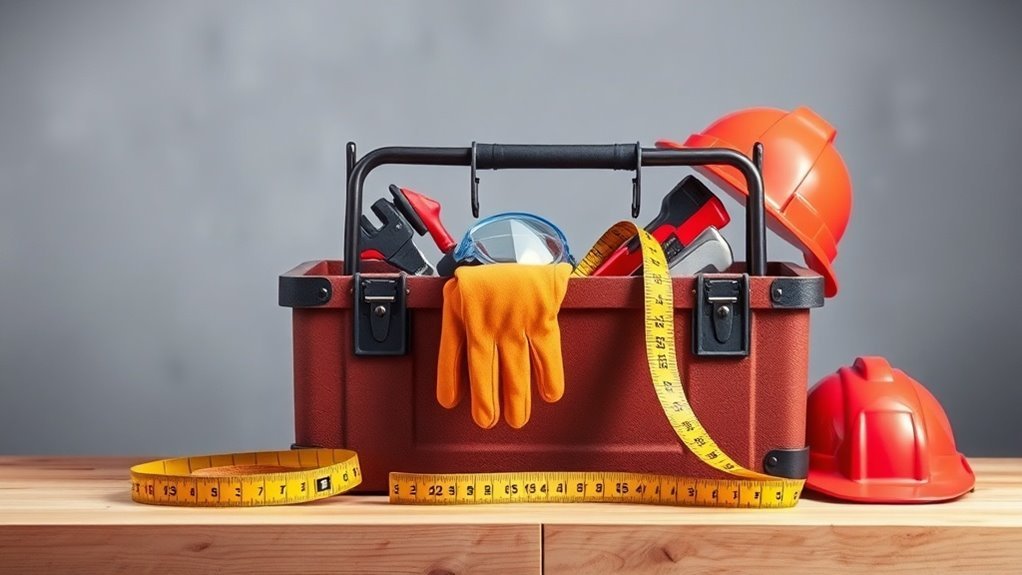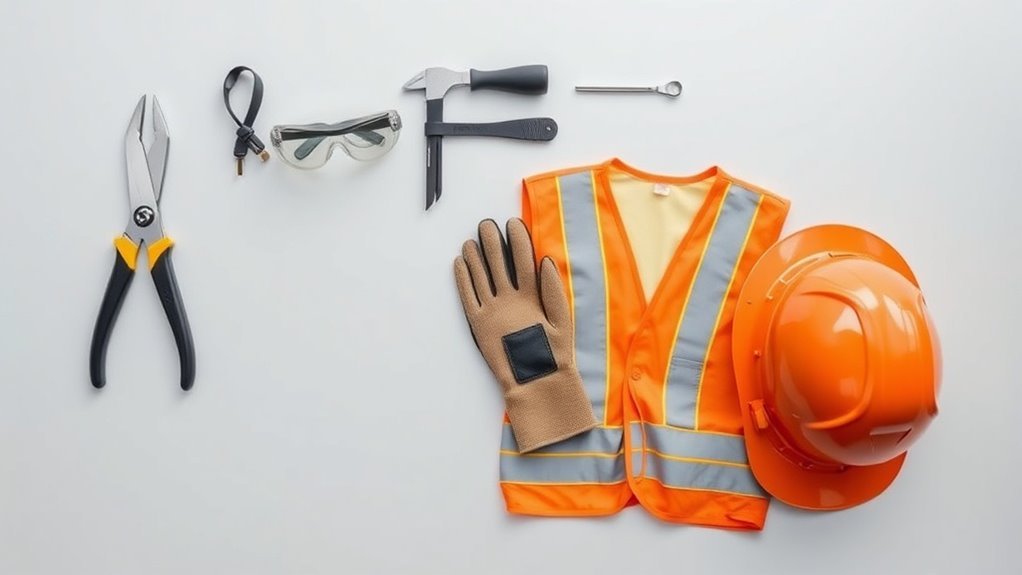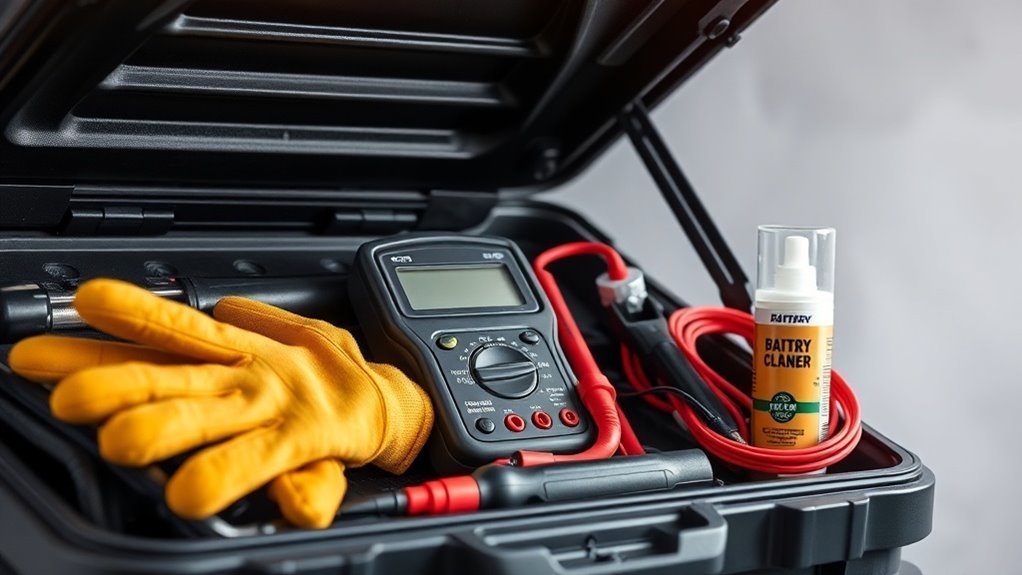Why Fit Matters in Protective Clothing
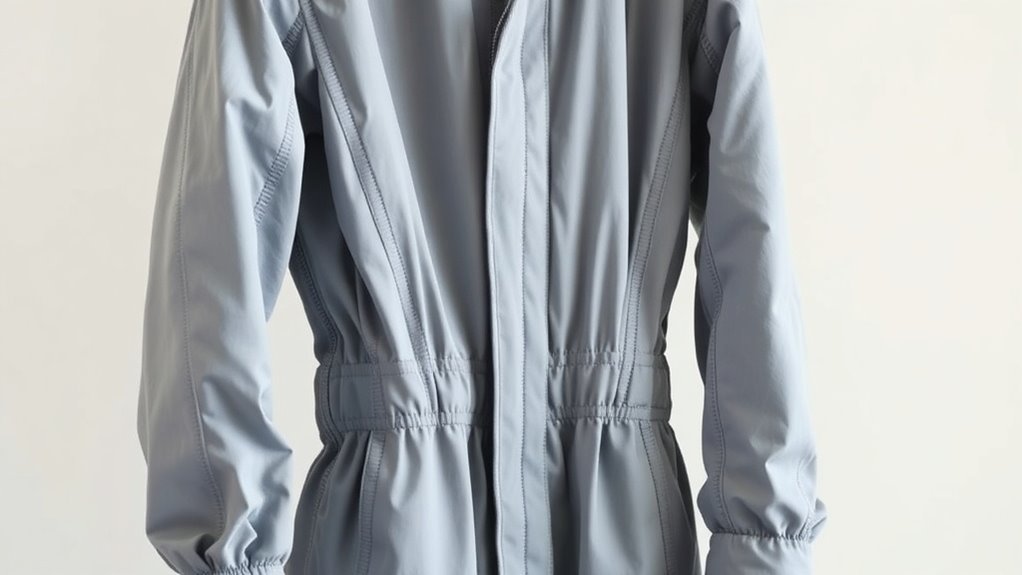
Fit matters in protective clothing because it directly affects your mobility, safety, and comfort in hazardous environments. Ill-fitting gear can restrict your movements or snag on equipment, increasing the risk of injury and distraction. A proper fit guarantees you remain protected against environmental hazards while improving comfort, which is essential for focus and performance. Plus, a well-fitted outfit adapts better to your work environment. Discover how fit plays a role in emergency situations and overall safety.
Key Takeaways
- Proper fit enhances mobility and comfort, allowing for efficient movement and reducing fatigue during long hours of work.
- Well-fitted clothing protects against environmental hazards, maintaining barriers against harmful substances and ensuring safety.
- Layering and adaptability in fit are essential for specific work environments, providing insulation and protection while allowing freedom of movement.
- Correctly sized garments prevent entanglement risks and ensure visibility, minimizing distractions and increasing overall safety.
- In emergencies, a proper fit facilitates quick movement and focus, essential for avoiding injuries and improving performance at work.
The Impact of Fit on Mobility
When you’re wearing protective clothing, the fit can greatly affect your mobility. If the gear is too tight, it might restrict your movements, making tasks challenging or even impossible.
On the other hand, if it’s too loose, you risk snagging on objects or losing essential protection. You need a balance—clothing that hugs your body without constraining movement.
Consider factors like bending, reaching, and squatting; the right fit allows you to perform these actions effortlessly. Additionally, a proper fit enhances comfort, reducing fatigue during long hours on the job. This way, you can focus on your tasks rather than adjusting or fighting with your clothing.
Ultimately, the right fit is vital for maintaining both safety and efficiency, and it supports the integration of ergonomic principles in safety gear design, leading to better overall performance.
Protecting Against Environmental Hazards

When it comes to protecting against environmental hazards, the fit of your clothing plays an essential role.
A proper fit guarantees that you stay comfortable while still offering the necessary water resistance and breathability, especially in humid conditions.
If your protective gear doesn’t fit right, it can compromise both your safety and comfort.
Proper Fit Importance
Although some might overlook the significance of fit in protective clothing, it plays an essential role in safeguarding you from environmental hazards. If your gear’s too loose, it can bunch up or shift, leaving skin exposed to harmful substances.
On the other hand, clothing that’s too tight may restrict your movement, preventing you from responding effectively in critical situations. Properly fitted garments create a barrier against chemicals, dust, and other environmental threats, ensuring they stay where they should.
Additionally, a good fit helps you maintain comfort, which is vital for focus and performance in hazardous environments. Ultimately, wearing well-fitted protective clothing isn’t just about compliance; it’s about maximizing your safety and effectiveness on the job.
Humidity and Water Resistance
Properly fitted protective clothing not only safeguards you from exposure to hazardous materials but also plays a critical role in managing environmental conditions like humidity and water.
When you’re working in wet or humid environments, the right fit guarantees that your gear doesn’t allow moisture to penetrate. Loose clothing might create gaps where water can seep in, reducing your protection and increasing discomfort. A snug fit helps maintain the integrity of water-resistant materials, allowing them to function as intended.
Additionally, when your clothing is tailored properly, it minimizes the risk of mold and mildew growth, which can result from trapped moisture. By focusing on fit, you’re better prepared to handle challenging environmental hazards without compromising your safety.
Breathability and Comfort Factors
Breathability is essential in protective clothing, especially when you’re maneuvering through environments filled with potential hazards. If your gear isn’t breathable, you’ll quickly feel uncomfortable, which can distract you from the task at hand.
Fabrics that allow moisture and heat to escape help regulate your body temperature, keeping you cool during strenuous activities.
When you’re working in high-stress situations, comfort is key. Breathable materials not only enhance your performance but also reduce fatigue.
Look for features like mesh panels or moisture-wicking technology that promote airflow while maintaining protection.
Comfort and Its Role in Safety
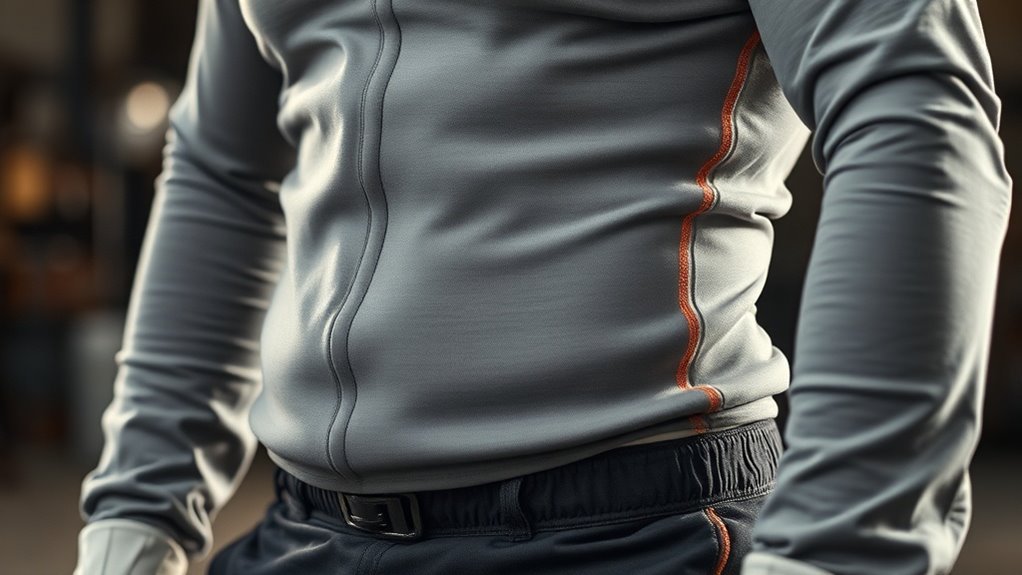
Comfort plays an essential role in safety when it comes to protective clothing. When you’re comfortable, you’re more focused on the task at hand and less distracted by discomfort.
Here are four ways comfort enhances safety:
- Increased Mobility: Comfortable clothing allows for easier movement, enabling you to react quickly in emergencies.
- Reduced Fatigue: Well-fitting gear minimizes strain and fatigue, keeping you alert longer.
- Better Concentration: When you’re not adjusting your clothing constantly, you can concentrate on your surroundings and job.
- Enhanced Compliance: You’re more likely to wear protective gear consistently if it feels comfortable, ensuring you’re always safe.
Incorporating comfort into protective clothing design isn’t just a luxury; it’s a necessity for your safety on the job. Additionally, using personal protective equipment appropriately can greatly enhance your overall safety during renovations.
Risk of Entanglement With Ill-Fitting Gear
When your protective gear doesn’t fit properly, it can seriously hinder your mobility. This increases the chance of accidents, as you may find yourself caught in machinery or tripping over loose fabric. Understanding proper fit guidelines is essential to minimize these risks and keep you safe on the job. Regular inspection of high-quality gear is also important to ensure optimal safety and functionality.
Impact on Mobility
Ill-fitting protective clothing can severely hinder your mobility, increasing the risk of entanglement in hazardous environments. When your gear doesn’t fit properly, it can restrict your movement and make you more vulnerable to accidents.
Here are some mobility issues you might face:
- Limited Range of Motion: Tight clothing can prevent you from bending or stretching properly.
- Increased Bulk: Oversized gear may snag on equipment or materials, leading to potential entanglement.
- Distraction: Ill-fitting gear can shift and move as you work, diverting your attention from critical tasks.
- Fatigue: Uncomfortable clothing can lead to physical strain, reducing your overall stamina and ability to respond swiftly.
Ensuring a proper fit is essential for maintaining mobility and safety.
Increased Accident Risk
Properly fitting protective clothing plays a key role in minimizing the risk of accidents, particularly the danger of entanglement.
When your gear’s too loose or baggy, it can easily snag on equipment or machinery, leading to severe injuries or even fatalities. If you’re working in environments where moving parts are present, wearing ill-fitting clothes can drastically increase your risk of getting caught.
It’s not just about discomfort; it’s about keeping you safe. An ill-fitting helmet might shift during critical moments, impairing your vision when you need it most.
By ensuring your protective clothing fits correctly, you’re not just following safety protocols—you’re actively safeguarding yourself from unnecessary risks that could have lifelong consequences.
Prioritize a snug fit, and reduce your accident exposure.
Proper Fit Guidelines
Achieving the right fit for your protective clothing is essential to reduce the risk of entanglement. Ill-fitting gear can snag on equipment or catch on objects, leading to serious injuries. To guarantee your protective clothing fits properly, follow these guidelines:
- Measure Yourself: Always take accurate body measurements before selecting clothing sizes.
- Choose the Right Style: Look for designs that allow for mobility without excess fabric.
- Check the Length: Make sure sleeves, pants, and other components aren’t too long, which could lead to tripping or catching.
- Test Mobility: Move around in your gear to verify it doesn’t become restrictive or snag on items.
Following these steps can greatly enhance your safety and efficiency on the job.
The Importance of Layering in Protective Clothing
While you might think one layer of protective clothing is enough, layering plays an essential role in maximizing safety and comfort. Each layer can serve a specific purpose, whether it’s insulation, moisture-wicking, or protection from hazards. Proper layering not only keeps you safe but also helps you stay dry and comfortable throughout your tasks. It’s crucial to ensure that your protective clothing adheres to safety gear standards to guarantee its effectiveness.
Here’s a quick overview of layering benefits:
| Layer Type | Function |
|---|---|
| Base Layer | Wicks moisture away from skin |
| Insulating Layer | Traps heat for warmth |
| Protective Layer | Shields against hazards |
| Outer Layer | Repels wind and moisture |
Ensuring Visibility With the Right Fit
The right fit in protective clothing not only enhances comfort but also plays an essential role in guaranteeing visibility in hazardous environments. When your clothing fits well, you can better showcase the reflective materials and bright colors designed to alert others to your presence.
Here are four key aspects to evaluate for visibility:
- Correct Size: Avoid baggy clothing that can obscure reflective accents.
- Layering: Ascertain outer layers don’t hide important reflective gear beneath.
- Color Contrast: Choose colors that stand out against the surroundings and are appropriate for your work area.
- Movement: Verify the fit allows for movement while keeping visibility intact—no hindrances!
Adapting Fit for Different Work Environments
When working in diverse environments, adapting the fit of your protective clothing becomes essential for both safety and functionality. In construction, for example, you need gear that allows for easy movement and flexibility, which helps prevent accidents.
On the other hand, in a lab setting, a snug fit can help reduce contamination risks and provide better protection from chemical spills.
Tailoring your clothing to specific conditions guarantees you’re not only protected but also comfortable. Loose clothing can snag on equipment, while overly tight garments may restrict your movement, leading to fatigue. Additionally, ensuring that you wear personal protective equipment like ear protection is crucial in maintaining your overall safety while working.
Understanding the demands of your work environment helps you’d make the best choices for fit, enhancing both performance and safety in your daily tasks.
The Role of Proper Fit in Emergency Situations
In emergency situations, having properly fitted protective clothing can make all the difference between safety and injury.
When time is critical, you want gear that allows for quick movement and maximum protection.
Here are four reasons why proper fit matters:
- Mobility: Ill-fitting clothing can restrict your movement, making it harder to respond effectively.
- Protection: Gaps in fit can leave skin exposed, increasing the risk of injury from hazards.
- Comfort: If your gear is too tight or too loose, it can distract you and hinder your performance.
- Confidence: Wearing properly fitting attire helps you feel secure, enabling you to focus on the task at hand.
In emergencies, every second counts—ensure your protective clothing fits right.
Enhancing Performance Through Tailored Gear
Having tailored gear can greatly enhance your performance in vital situations, as it meets your specific body shape and movement needs.
When your clothing fits most effectively, you’ll notice increased comfort, allowing you to focus entirely on the task. Tailored gear minimizes distractions, whether from chafing or restricted mobility. You can confidently move, bend, and stretch, knowing your gear won’t hold you back.
This advantage is particularly essential during high-stress environments, where every second counts. You’ll also experience less fatigue since tailored clothing often balances weight distribution.
Additionally, specially designed features can improve your agility and responsiveness, sharpening your reaction times. Ultimately, tailored gear guarantees you’re at your best when it matters most, enhancing both your confidence and effectiveness.
Investing in Quality and Fit for Long-Term Safety
When it comes to protective clothing, proper fit is essential for ensuring your safety and comfort. You might think about saving money with cheaper options, but investing in quality gear pays off in the long run. Choosing the right fit and high-quality materials can greatly enhance your protection and performance over time. Additionally, effective respiratory protection is vital for safe DIY endeavors, as it safeguards against harmful dust, fumes, and chemicals.
Importance of Proper Fit
Proper fit in protective clothing isn’t just a detail; it’s a critical component of your safety. When your gear fits well, you enhance your protection and overall performance.
Here are some reasons why proper fit matters:
- Mobility: A well-fitted garment allows you to move freely, preventing restrictions that could lead to accidents.
- Comfort: Good fit means you’re more comfortable, which helps maintain focus and productivity.
- Protection: Ill-fitting clothing can leave gaps, exposing you to hazards that the gear is meant to shield against.
- Durability: Properly fitted clothing tends to last longer, as it withstands wear and tear better than loose or tight items.
Investing in the right fit can greatly impact your long-term safety and effectiveness on the job.
Quality Over Price
Investing in well-fitted protective clothing goes hand-in-hand with choosing quality materials. When you prioritize quality, you’re not just buying gear; you’re ensuring your safety and comfort during critical tasks. While lower-priced options may seem appealing, they often compromise on durability and performance.
| Feature | Quality Options | Lower-Cost Options |
|---|---|---|
| Material Strength | High | Medium |
| Comfort Level | Enhanced | Basic |
| Safety Ratings | Certified | Unverified |
| Longevity | Years of use | Short-term |
| Warranty | Extensive | Limited |
Long-Term Investment Benefits
Choosing high-quality, well-fitted protective clothing isn’t just about immediate needs; it’s a smart long-term investment in your safety and peace of mind.
When you prioritize fit and quality, you’re not just making a purchase; you’re safeguarding your future.
Here are some long-term benefits you’ll appreciate:
- Durability: Quality materials withstand wear and tear, saving you money over time.
- Comfort: Well-fitted clothing allows for better mobility and reduces fatigue, keeping you focused on your tasks.
- Enhanced Protection: Proper fit guarantees that protective gear functions as intended, reducing the risk of injury.
- Confidence: Knowing you’re protected boosts your confidence level, which can improve work performance.
In the end, investing wisely pays off in safety and effectiveness.
Questions
How Can I Determine the Right Size for Protective Clothing?
To determine the right size for protective clothing, measure your chest, waist, hips, and inseam. Compare these measurements to the manufacturer’s sizing chart, and consider trying on different styles for the best fit.
Are There Specific Fits for Different Body Types in Protective Gear?
Absolutely, there’re specific fits for different body types in protective gear. You wouldn’t wear oversized armor in battle, right? Similarly, choosing the right fit guarantees comfort and mobility, tailored to your unique shape and size.
What Materials Provide the Best Fit for Flexibility and Protection?
For flexibility and protection, look for materials like stretchable nylon or spandex blended with Kevlar or Dyneema. These fabrics offer comfort and mobility, ensuring you stay agile while maintaining high levels of safety during activities.
How Often Should I Reassess the Fit of My Protective Clothing?
Research shows that 70% of workers experience discomfort due to improper fit. You should reassess your protective clothing fit at least annually or whenever there’s a change in your body size or the clothing’s condition.
Can Alterations Be Made to Improve the Fit of Protective Gear?
Yes, alterations can be made to improve the fit of your protective gear. Tailoring adjustments like taking in seams or adding extra padding can enhance comfort and functionality while maintaining the gear’s protective qualities.
Conclusion
In protective clothing, fit isn’t just a detail—it’s a game changer. Without the right fit, you compromise your mobility, comfort, and ultimately your safety. Think of it this way: would you plunge into the deep end wearing a parachute? Quality, tailored gear isn’t just an investment in comfort; it’s your shield against hazards. So, make sure your protective clothing fits just right—it could make all the difference when it counts the most. Stay safe!


